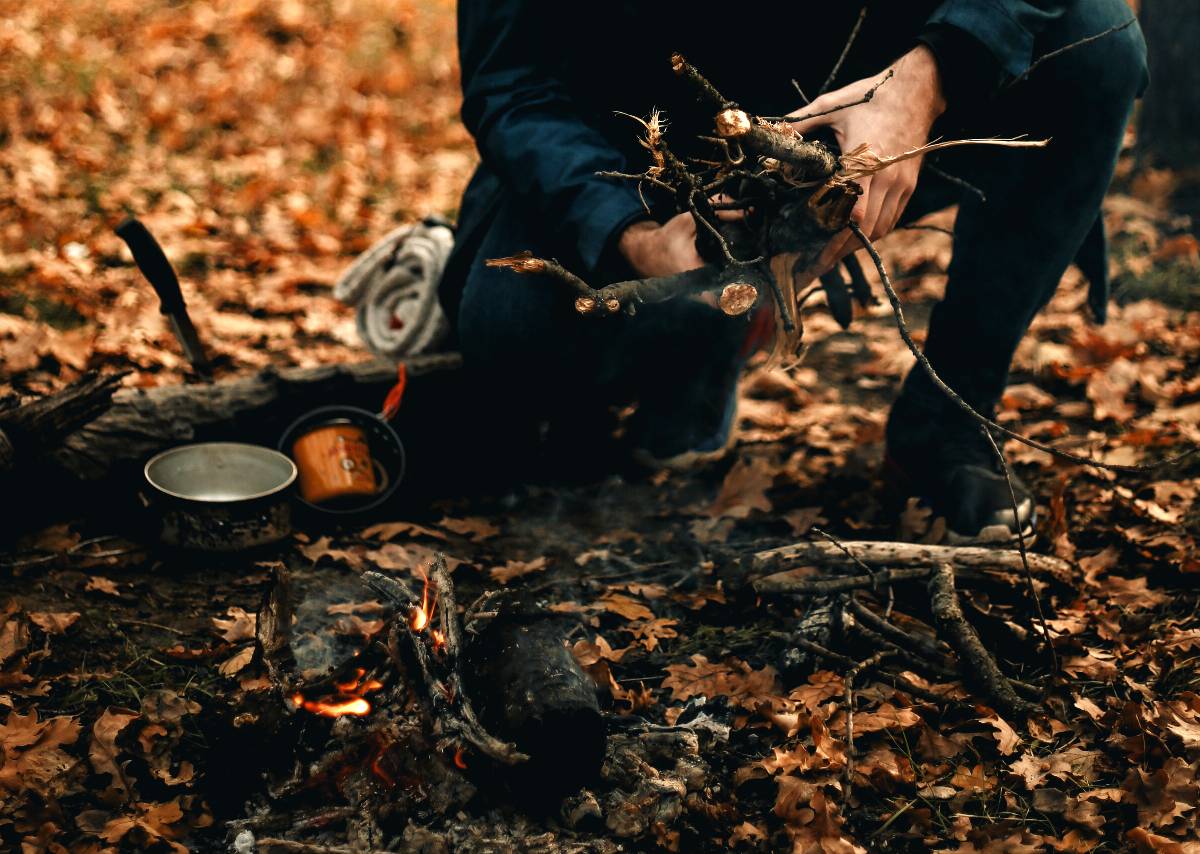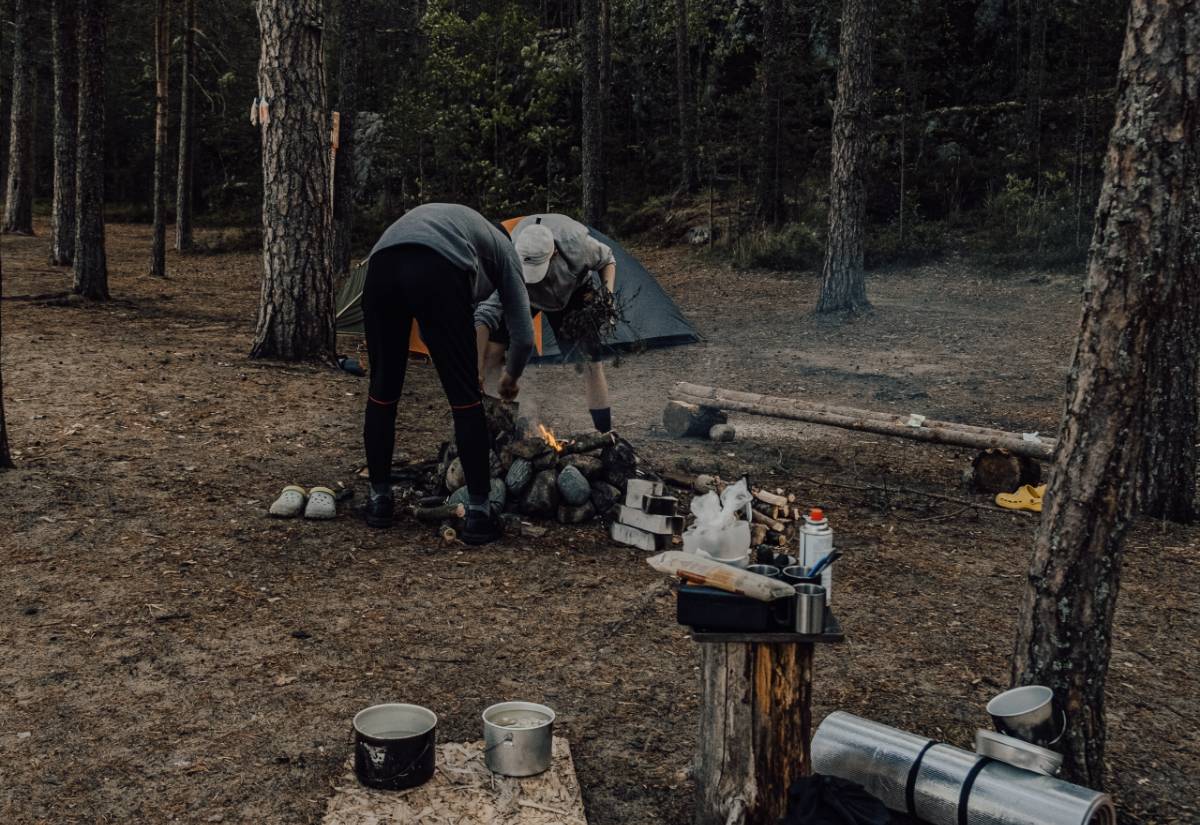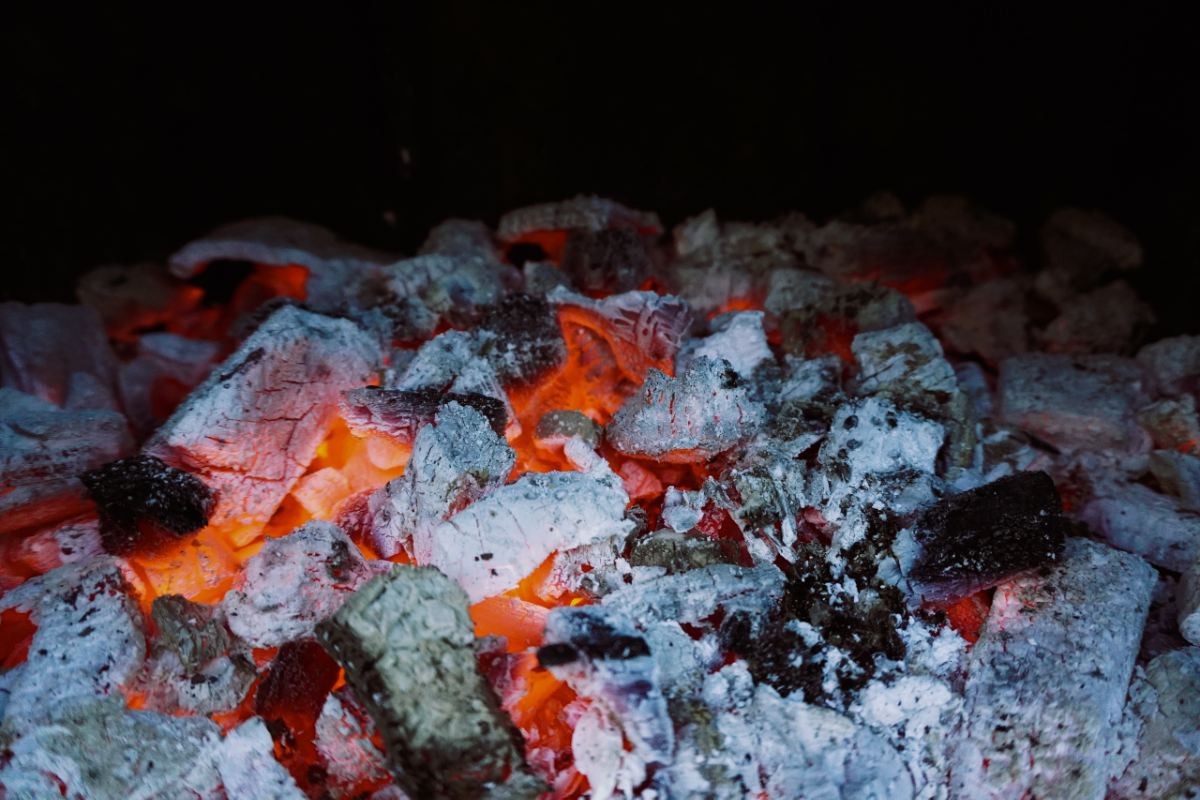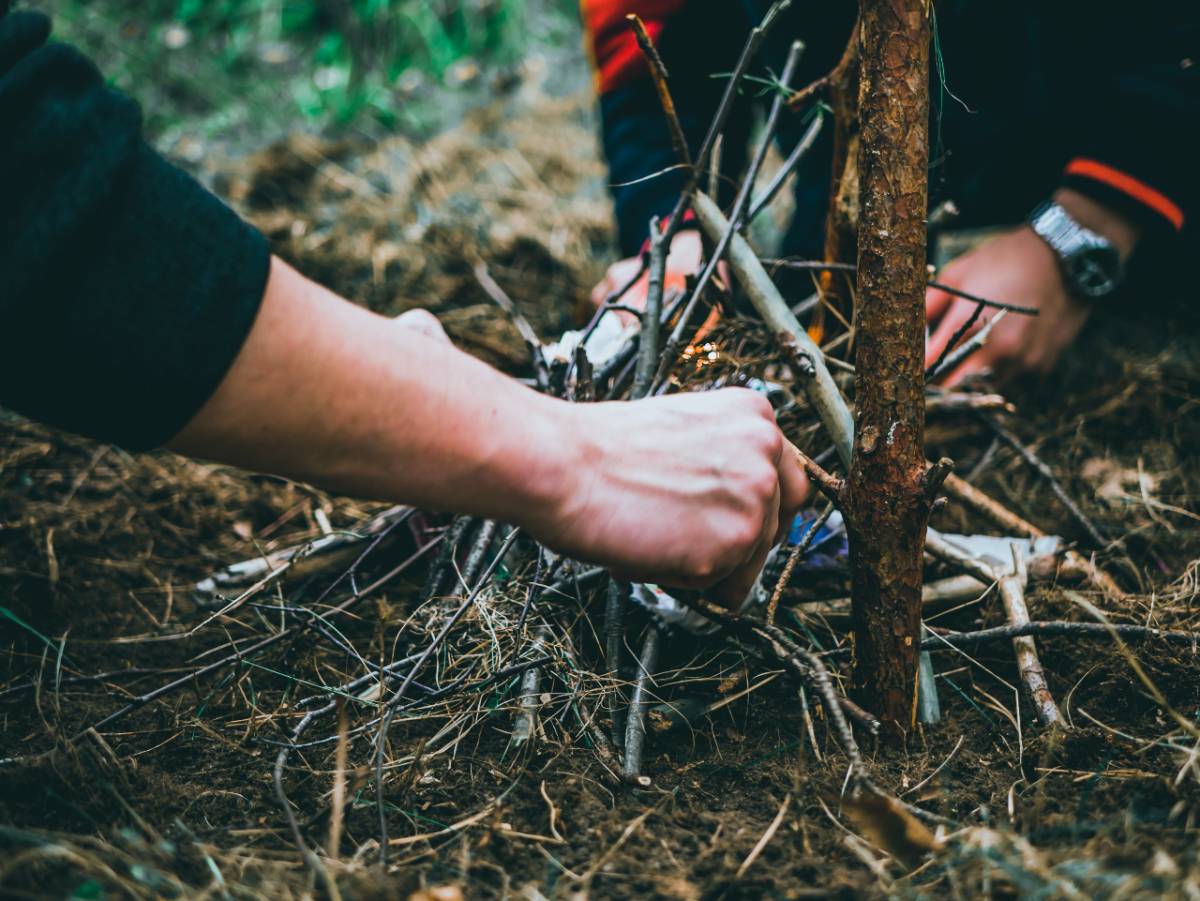Starting a campfire is an essential skill for any outdoor enthusiast. Whether you’re roasting marshmallows, telling stories around the fire, or just providing warmth on a chilly night, having a campfire can make your camping experience more enjoyable and memorable. But if you don’t know how to start a campfire correctly, it could end up being dangerous – or even disastrous! This article will provide step-by-step instructions on how to build and maintain a safe, successful campfire every time.
You don’t need to be an expert camper in order to get a roaring fire going; with the right materials and tools at your disposal, anyone can do it. First of all, you’ll need kindling (twigs and small sticks), some newspaper or dry leaves for tinder, matches or a lighter, larger logs of wood that are about the size of your forearm (or bigger!), and rocks to create a circle around your fire pit. Once you have these items gathered together, it’s time to put them into action!
Finally, remember: safety first when starting any type of fire. Make sure there are no combustible objects nearby – like tents or trees – that could catch alight from sparks flying out from your campfire. Have buckets of water handy so that you’re prepared if anything does go wrong. With this advice in mind, let’s look at exactly what steps need to be taken in order to light up the night sky safely and effectively!
1. Gather The Supplies
Ah, the campfire: a time for singing songs and roasting marshmallows. But how does one get from ‘0’ to fire? With just three simple steps, you can have your very own roaring bonfire in no time!
First things first, let’s gather all the supplies needed. This includes kindling (branches), tinder (dried grass or leaves) as well as some matches or a lighter. Don’t forget some newspaper too – it’ll come in handy later. Once everything is gathered up and ready to go, move on to the next step.
Now that y’all got what ya need for this shindig, you gotta prepare the fire pit. The size of your pit depends on the size of your group, but make sure it’s big enough so everyone can enjoy marshmallow-roasted s’mores without burning their fingers! Make sure to clear any debris away before lighting anything either; we don’t want an accidental forest fire now do we?
2. Prepare The Fire Pit


It’s time to get the ball rolling and prepare a fire pit for your campfire. First things first, you’ll need to find an ideal site that is away from trees or anything else that could catch on fire. Once you have found the right spot, it’s time to roll up your sleeves and start digging. You will want to make the pit wide enough so the flames don’t spread too far but deep enough so they are contained within the walls of the pit.
With all dirt dug out, it’s important to line the bottom of your fire pit with stones. This will protect both your ground and any logs that may be added later as fuel. If possible, try to choose rocks with flat surfaces since this will provide a more even surface for cooking food or boiling water in pans if desired. Additionally, arrange some larger rocks around the edges of your pit which can act as benches for seating while enjoying your campfire!
Now that you’ve got everything ready for building a campfire, it’s time to move onto arranging fuel such as kindling and logs. Remember that safety should always remain top priority when working with open flame – use caution when selecting materials for your firepit and know what types of wood burn best in certain climates or temperatures before lighting up!
3. Arrange The Fuel
Organizing the fuel for a campfire is like working on an intricate puzzle – all the pieces must fit perfectly together. Here’s what you need to know:
- Gather kindling, sticks, and logs;
- Arrange them in a teepee-like structure;
- Place larger logs around the outside of your stack.
The kindling should be placed at the centre of your fire pit as this will provide more air flow and help ignite faster. To create the tepee shape with sticks, start by placing two small-to-medium sized sticks into the ground parallel to each other with some distance between them.
Then lay additional sticks in a crisscross pattern over the first two until you’ve created enough height to support thicker logs without collapsing (you can also use rocks or bricks to hold up these thicker logs). Once completed, it’s time to light your campfire!
4. Light The Fire
It is often said that a campfire’s success lies in the preparation, and this could not be more true. While it may seem simple to light a fire, having an understanding of how best to arrange fuel beforehand can mean the difference between a roaring blaze and disappointment. This fourth step of lighting the fire itself draws on all the prior steps for successful execution.
The most common method is to use matches or lighters. With them, you will have some kind of flame with which to ignite your tinder bundle (from Step 2).
Then blow lightly while directing your breath onto the flames until they become bigger – if done correctly, these small sparks will catch hold of surrounding material like twigs and sticks, beginning a chain reaction towards larger pieces of wood from Step 3.
Once combustion has started, watch carefully as each piece catches alight; adding new logs when necessary but being careful not to smother out any newly lit fires by including too much moisture-heavy wood at once. As your campfire grows stronger and brighter, so does its ability to keep you warm and create lasting memories!
5. Feed The Fire


Once the fire is lit, it’s time to feed it. Like a living entity, a campfire needs fuel and air to survive; just like Hercules had to tend the flames of Olympus, we must attend our own fireside vigil. But while tending this flame, one thing should always be kept in mind – safety first!
When adding wood or charcoal to your fire there are several things you need to consider. Firstly, make sure that whatever material you use is dry; if not, then its moisture will cause steam which can extinguish the blaze.
Secondly, don’t add too much at once as an over-abundance of fuel can overwhelm the fire or even cause smoke inhalation for those close by. Lastly, make sure that any combustible materials around the fire are safely away from sparks or flying embers.
Building up a good bed of coals requires patience and care but when done correctly it has its benefits: warmth for cold nights under the stars, protection against wild predators, and a place where stories may be shared without fear of judgement.
Although it may take some effort on our part, all these rewards make it worth the effort in the end. With everything now ready and set up properly we can move onto the next step….
6. Extinguish The Fire
Extinguishing a campfire is an important step in the process of starting a fire. Did you know that approximately 98% of all wildfires are caused by human activity? Therefore, it’s essential to understand how to properly put out your campfire.
The first thing you should do when ending your fire is stop feeding it any additional fuel or oxygen. Once the flames have died down and you can no longer see smoke rising from it, begin shoveling dirt onto the remaining burning embers until they are completely covered.
If there is still heat emanating from beneath the ashes, continue adding dirt until everything has cooled off thoroughly. It’s also important not to leave any glowing coals behind as these can reignite with just a spark!
Now that your fire has been safely extinguished, it’s time to clean up the fire pit area before leaving. This includes disposing of any leftover wood debris and spreading water over the entire area using buckets or a garden hose if one is available nearby. Doing so will help ensure that nothing remains smoldering after you’ve departed and prevent further damage from occurring on your campsite!
7. Clean Up The Fire Pit


After you have put out the fire, the next step is cleaning up the fire pit.
The first thing to do after putting out your campfire is to spread the ashes around with a shovel, rake, or stick. This will disperse any remaining embers and help cool down the area faster. It also helps prevent sparks from flying up into dry vegetation nearby.
Additionally, make sure all pieces of wood are completely extinguished before burying them under dirt or leaves; otherwise, they can reignite later on if not properly cooled off at this stage.
Afterwards, clean up any debris such as cans or bottles near the fire pit itself and dispose of them appropriately.
Finally, check for any signs that may indicate an underground hot spot which could potentially catch back onto flame in the future; look for smoldering spots on bare ground or charred roots sticking aboveground.
If these exist, carefully douse them with water until they are fully extinguished and then cover them over until no smoke remains visible. Following these steps ensures that your campfire was safely started and extinguished so you can enjoy it without worry!
Frequently Asked Questions
Let’s review some of the most frequently asked questions about starting a campfire.
What Kind Of Wood Should I Use For My Campfire?
When starting a campfire, the type of wood you use can have an effect on how successful your fire will be. It is important to consider what kind of wood should be used for your campfire so that it burns safely and efficiently.
The best types of wood to use are hardwoods such as oak, hickory, or maple. These woods burn hotter and longer than softwood varieties like pine or fir.
Hardwoods are great because they provide more heat with less smoke and create embers which make it easier to keep the flame going strong throughout the night. Additionally, these woods also burn at lower temperatures meaning there’s less risk of sparks flying out from the flames.
It is also recommended that you look for dry logs when selecting your firewood. Wet wood produces significantly more smoke which can cause irritation in eyes and throat, plus wet logs don’t light very easily nor do they last long before burning out completely.
Avoid using driftwood since this often contains salt deposits which can corrode metal parts around your campsite over time.
Selecting a combination of hardwoods, preferably those that are already seasoned and split into smaller pieces, is ideal for achieving a good campfire that lasts all night long without too much smoke or ash production:
- Oak
- Hickory
- Maple
- Seasoned & Split Firewood for maximum burn time and heat output.
What Safety Precautions Should I Take When Starting A Campfire?
Starting a campfire can be an exciting and rewarding experience, but it’s important to stay safe. Like any other task that involves fire, there are certain safety precautions you should take when starting a campfire.
Like a lit match in dry grass, the potential for danger is always present when dealing with open flames. Before building your campfire, make sure you have cleared away any flammable materials from around your fire pit such as leaves and sticks. Additionally, keep children and pets at least 10 feet away from the firepit while maintaining control of them at all times.
When gathering wood for your campfire, use only dry pieces of timber or kindling—never use green wood or wet logs as they will produce smoke instead of producing flame. Also, don’t forget to check local laws regarding fires before lighting up; many parks and forests restrict what type of fires can be built and may even require permits for larger bonfires.
Once you’ve taken these necessary steps towards preparing for a successful campfire session, sit back and enjoy the warmth of the blaze!
Is It Safe To Leave A Campfire Unattended?
Starting a campfire is an exciting and rewarding activity, but one that comes with great responsibility. To ensure everyone’s safety, it is important to understand the risks of leaving a campfire unattended. One wrong move can lead to disaster!
Leaving a campfire unattended should never be taken lightly – you are playing with fire quite literally! The potential for destruction is almost endless; as if by some magical spell, wildfires could quickly break out at any moment. It’s almost too scary to even imagine.
Therefore, it is vitally important to take all necessary precautions when starting and maintaining your campfire. Make sure the flames are completely out before turning away from them and always stay within earshot in case anything goes awry.
For added peace of mind, make sure you have access to water or dirt nearby in order to extinguish the flames if needed. Taking these steps will help keep you safe so you can enjoy a beautiful evening around the campfire without worry or fear.
Is It Okay To Build A Campfire During A Burn Ban?
Creating a campfire can be an enjoyable way to spend time with friends and family, especially in the summer when nights are long. But during times of dry weather or high heat, it’s important to check for local burn bans before striking your match.
As days become longer and temperatures rise, it’s essential to do our part in preventing wildfires by being mindful of fire safety rules – even if that means waiting until conditions improve. So how do you know if having a campfire is safe?
For starters, keeping tabs on the area’s fire restrictions can give you a good idea of whether building a campfire is allowed:
- Pay attention to announcements from emergency services regarding regional fire safety regulations;
- Follow any advisories issued by state agencies;
- Be aware of local ordinances banning open flames;
- Check online for updates about nearby fires or warnings against burning outdoors.
If these steps indicate that a ban is in place, then unfortunately no amount of care will make it okay to have an outdoor blaze. It may seem like a small sacrifice but respecting these policies helps protect lives and property – not just now but well into the future as well.
What Are The Best Ways To Preserve Natural Resources When Building A Campfire?
Creating a campfire is an age-old tradition that has brought friends and family together for centuries. But it’s important to remember to do so responsibly in order to preserve our natural resources, now more than ever. With the right approach, we can continue to enjoy this activity while respecting the environment around us.
First off, be sure to check your local regulations before starting a fire – many areas have burn bans or other restrictions that must be followed. If you’re given the green light, gather wood from dead trees nearby rather than cutting down live ones.
This ensures that living vegetation isn’t harmed in the process of creating your campfire. Additionally, choose small pieces of wood as opposed to large logs; not only will this save energy but also help prevent unnecessary smoke pollution in the air.
Finally, keep an eye on surrounding plants and grasses when setting up your campfire – make sure they don’t get too close since sparks could ignite them easily! When putting out your fire at the end of the night, always use water thoroughly until there are no signs of any heat left behind; leaving even a smoldering ember can lead to forest fires if unchecked.
It may take extra effort, but following these simple steps helps ensure that our outdoor adventures won’t harm nature’s beauty for generations to come.
Conclusion
It’s an amazing feeling to sit around a roaring campfire in the woods with friends and family. The warmth radiating off the flames can bring hours of laughter, conversations, and stories.
As you enjoy the great outdoors, it is important to take precaution when building and maintaining a campfire. By using dry wood, being mindful of burn bans, following safety guidelines and caring for our natural resources we are able to keep everyone safe while creating memories that will last a lifetime.
We should all remember that starting a fire is more than just gathering some sticks; it’s about connecting with nature and those around us. I encourage everybody to get out there this summer, make sure you have done your research on how to safely start a campfire and share in its beauty!
